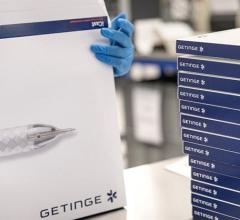July 31, 2008 – No major difference was found in long-term safety or efficacy between sirolimus-eluting stents (SES) and paclitaxel-eluting stents (PES), according to a recent study that found both stent types were efficacious in reducing revascularization, but were limited by a small continual increase in late stent thrombosis.
The study appears in the Aug. 1 issue of the American Journal of Cardiology.
Researchers from Washington Hospital Center’s Division of Cardiology in Washington, D.C. said while multiple studies comparing SES and PES in patients with coronary artery disease have been performed, it remains uncertain whether a differential in long-term efficacy and safety exists. Unselected patients treated exclusively with one drug-eluting stent type were enrolled in the registry experience at the Washington Hospital Center. There were 2,099 patients (3,766 lesions) treated with SES and 1,079 patients (1,850 lesions) treated with PES. Patients were followed at 30 days, one year, and two years for the clinical endpoints of death, myocardial infarction, target vessel revascularization, and definite and definite/probable stent thrombosis.
Researchers said patients in the SES group had more dyslipidemia, history of congestive heart failure, and ostial lesions. The patients treated with PES had more previous coronary artery bypass surgery, unstable angina, and type C lesions.
At two years, unadjusted major adverse cardiac events (MACE) (22.6 vs. 21.1 percent, p = 0.3) and target vessel revascularization (13.3 vs. 11.2 percent, p = 0.1) were comparable. The incidence of definite stent thrombosis was higher in the SES group (1.8 vs. 0.9 percent, p = 0.05) driven by early events. Similar results were seen after adjustment for baseline differences: MACE (hazard ratio 1.1, 95 percent confidence interval [CI] 0.9 to 1.3, p = 0.5), definite stent thrombosis (hazard ratio 2.3, 95 percent CI 1.0 to 5.2, p = 0.05), and target vessel revascularization (hazard ratio 1.1, 95 percent CI 0.9 to 1.4, p = 0.4). The incidence and rate of late stent thrombosis (>30 days) were similar (0.7 vs. 0.5 percent, p = 0.4 and 0.24percent/year, both groups, respectively).
For more information: www.ajconline.org


 October 16, 2024
October 16, 2024 








